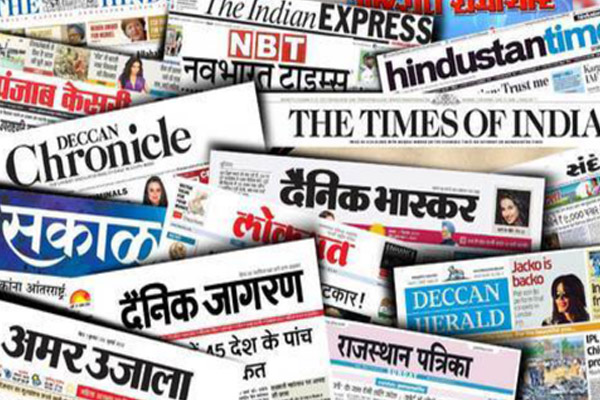The Indian government has prepared a new policy for newspapers as part of a well-thought-out strategy. This policy was not implemented before the Lok Sabha elections because the government could have had to face its adverse consequences. If this policy had been implemented before the elections, the newspaper owners working on the ground would have shown the government its place. It is possible that there would have been a change in power.
After the implementation of this policy, only 2 percent of newspapers will survive in the country. Small newspapers whose circulation is less than 25,000 will not get any advertisements. This is because 98 percent of newspapers will fall in this category. As per a strategy, the government will first kill the medium newspapers, then the low ones. The government is well aware of the status of small newspapers. It knows that they can never unite. As far as media organizations are concerned, they are already inactive. Everyone is busy shining their own politics.
Many new points have been added to this policy proposed by the Government of India so that no one can escape from anywhere. For example, for circulation verification
– There will be no option now except to have your own press.
– If the place of publication has been changed in the middle of a year, then you cannot get your newspaper verified.
– The income from newspaper distribution should be deposited in the bank account within 24-48 hours.
– From now on, only desk audits will be done. From now on, whether you print the newspaper or not. Just complete the paperwork and submit it to the department. Physical verification will not be done.
– The format of the machine room return should be according to the proposed RNI. Every minute report will have to be given. When was the plate installed, when the machine button was pressed when the paper was torn, at what speed did the machine run, and how many newspapers were printed on the machine in 8 hours? What is the make and model of the machine? What is the weight of the reel, how much paper came out of it, how much cardboard came out, and how much waste was there? The weight of each item has to be filled in the format proposed by RNI.
– What is the stock of paper in the printing press? It has to be written about the reel in terms of per gram. A total of 4 employees of the press will be engaged in filling in all these details. Everything has been asked to be weighed. Write it in MRR – Machine Room Return.
– If you do not have your own press, then assume that you will not be able to go through this process, let alone complete it. This is because a letter will be sent to the printing press owner by RNI. Which will have a format related to printing. It includes GST bills of printing, printing schedule, machine capacity, monthly electricity bill of the press or generator and diesel bill, names of all the newspapers printed on the press, their circulation number, whether the paper is provided by the party or by the press, paper bills, total consumption of ink used in the whole month, apart from many other parameters. All this information will have to be given to a press owner on an affidavit. Now you yourself think how many printers will agree to this.
– Apart from this, you will also have to give information about whether your newspaper is in profit or not after the total cost of the newspaper like paper, plate, ink, electricity bill, staff salary, distribution cost, and other expenses. If you have a gift for selling the newspaper, then how much did you give? A ratio will be calculated which will tell whether your newspaper is in profit or not. If it is not in profit then how are you running the newspaper?
– These are just some parts of the proposed policy of the Government of India.
We all have been associated with the newspaper business for about 30-40 years. Believe me, if this policy is implemented, then only 2 percent of newspapers will remain in the country. That too only like Hindustan Times or Times of India. This entire industry will end. If some people are thinking that we will keep our newspapers in the small category, then do not forget that policy is never made for a particular person or organization. This is another step taken towards ending democracy under a well-thought-out strategy. There is an old saying ‘How long will the goat celebrate’.
Apart from this, aspects worth considering:
– Which printer will be ready to print your newspaper?
– Lakhs of people from the newspaper industry will be thrown on the streets overnight.
– All the facilities given to journalists including PIB-DIP cards will end.
– Press clubs across the country, organizations formed for the interests of journalists, editors associations, etc. will end automatically.
– The RNI annual return is not being filed right now. Every publisher is facing difficulties with this. Along with this, the government has prepared to deal another blow. We are just waiting for instructions from the higher authorities.
– The government should ask for bills for the paper consumed by the newspapers, for the ink. All this is understandable but the imposition of so many formalities is actually aimed at breaking the morale of the newspaper owners. Most of the newspaper owners will surrender in fear of so much paperwork. This is what the government wants.
Anyway, if this policy is not stopped from being implemented, it will not take long for newspapers to become a part of history.

